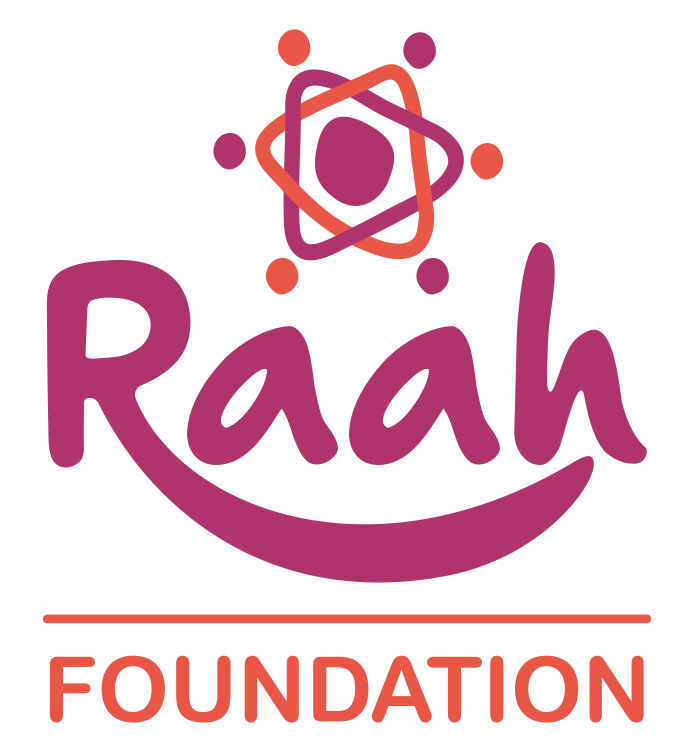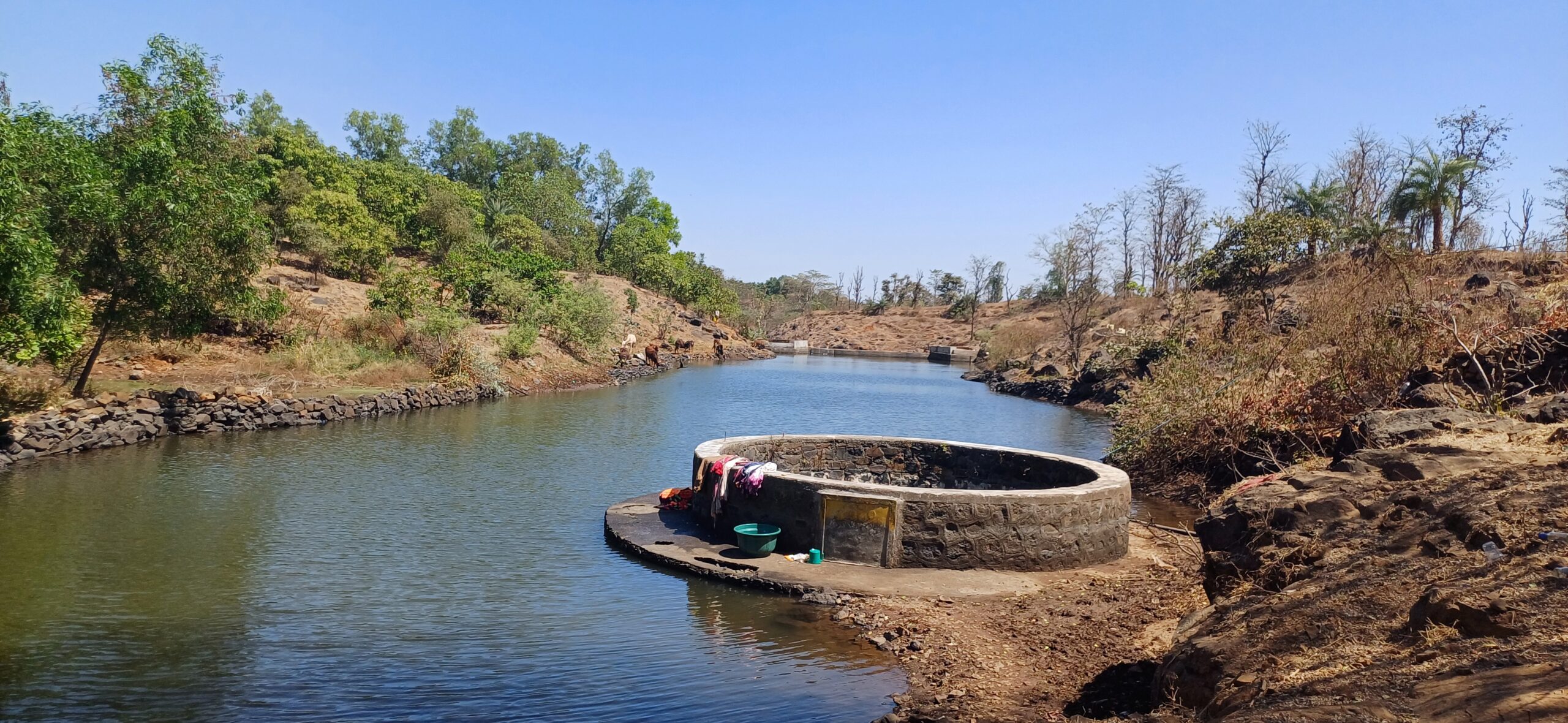Small Drops…Bigger Dreams!
Sakur, Shiroshi, Saturli, and many other picturesque villages, inhabited by the Warli, Kokna, and Katkari tribes, are some of the most draught prone villages in the Jawhar and Mokhada blocks of Palghar District.
Mosaic of challenges
In the interior villages of #Jawhar and #Mokhada blocks of Palghar districts in Maharashtra, the summer and rains pose their own challenges. Despite being one of the highest rainfall areas, it swiftly transforms as one of the most water scarce landscape.
One of the reasons being hydrogeology of the land having basaltic rocks underneath, that doesn’t support water percolation through soil and second being soil erosion causing silt accumulation in the existing water reservoirs like #check dams, hampering their water storage capacities.
Few other equally impacting factors are, being tribal communities living by the day, concept of conservation or saving, is non-existent, whether money or water. Heterogenous land ownership also worsens the situation due to inequitable water usage. Families living near the water bodies often abuse water, leaving the families residing far off, high and dry.
Plight of despair
This critical water crisis posed some of the serious threats to people and the planet too. Families walked around four to five miles a day to a nearby water resource for hygiene and household requirements. 95 % of the communities of this region were forced to #migrate to nearby urban locations in search of livelihoods every year.
With no skills at hand, they simply would stand in the labour market and wait for their turn. Out of six days, they would get work for three days and nothing during the rest. While trying to earn income in urban areas far away from their villages and families, they all live on the open pavements and carry rice with them to survive.
“During the day we cover our food with all our clothes, bed sheets to protect it from mice or other animals”; says one of the villagers.
The story of other villages was not quite different from this.
The Awakening
When we assessed the villages to identify the details of existing water management and conservation structures, we realised that either they did not exist or were in severely damaged condition causing water leakages rendering them useless within months of rains stopping.
We decided to move ahead with strategic approach. Our core principle being ‘Change without Charity’, #communityengagement and involvement always formed the core of our every work.
Multiple rounds of meetings with villagers helped us in detailed need assessment. It also helped communities clearly understand the scope of issues and solution perspectives. Systematic discussions and approvals of Gram panchayat members led to establishing the water management committee termed as #MalharSamiti.
The Scientific Approach
Repairing and building new check dams involved several technical steps to ensure structural integrity and effectiveness. Also rejuvenating other water bodies by de-silting, widening and deepening them was critical part of our approach.
Assessment and Planning:
We collaborated with #Acwadam as a knowledge partner to conduct a thorough assessment of the hydrogeology of the area to map the aquifers. We then assessed the existing structures for extent of damage, leakages and erosion, or weakness that required repair or reinforcement and developed a detailed plan to improve the supply side water harvesting infrastructure to make the village water positive.
Hydraulic Design and Environmental consideration:
We also evaluated the hydraulic performance of the check dam, including flow rates, sediment trapping efficiency, and downstream impacts. We adapted environmental best practices into the repair process, to minimizing disturbance to natural habitats, protecting water quality, and preserving biodiversity.
Site Preparation:
Clearing the area around the check dams and install erosion control measures, such as silt fences or erosion blankets, to prevent soil erosion during construction was the next step.
Structural Repair:
The majorly damaged or deteriorated components of the check dam were concrete walls, spillways, inlet/outlet structures, and gabion baskets. The eroded sections were replaced and weakened sections were reinforced with concrete, stone, or reinforced soil.
Waterproofing and Sealing:
The waterproofing materials, i.e. sealants or membranes, were applied to prevent water leakage through the dam structure. The cracks, joints, and seams were sealed to ensure watertightness and prevent erosion or seepage.
Reinforcement and Stabilization:
Along with the repairs, strengthening of the check dam structures was an important area of work. This was ensured by adding reinforcements of steel bars and mesh to improve stability and longevity.
Unity in Action
In every village we mapped for work related to check dams, we repeated the same procedure and received amazing support from the villagers. Involving communities, ignited a sense of unity and purpose. With shovels, picks, and unwavering determination, they came together, young and old, to breathe life into the dry check dams. The engineers, experts and communities worked #collaboratively towards construction of new check dams as well as repair of the dilapidated structures. It was a colossal effort, fuelled by the collective will to transform their life.
Community participation helped evolve and deploy multiple on-ground solutions leading to honest ownership towards the entire intervention.
The Footprints
Raah implemented construction and repair & revival of over 65 check dams and over 120 other water bodies creating over 1000 million litres of rainwater harvesting capacity per annum till March 2024 and the work will continue for the coming years for more villages. As the monsoon clouds gathered, a sense of anticipation filled the air. When the rains finally arrived, they filled the check dams to the brim and beyond. The repaired structures held strong, capturing every precious drop.
Green Transformation
When check dams are restored, they immediately began to mitigate the harsh impacts of erratic rainfall patterns and prolonged dry spells, common challenges exacerbated by climate change. Agriculture, the backbone of rural economies, benefited immensely from the improved moisture content in the soil.
Crops could survive longer dry periods, and farmers could afford to plant additional crops, boosting food security and livelihoods. Moreover, the increased availability of water supported the growth of vegetation, contributing to soil conservation and preventing erosion.
With the check dams restored, villagers were ecstatic. The agriculture flourished in these villages again. Fields that were barren after last rain, could now produce vegetables and turmeric even after rains due to irrigation. The availability of alternate livelihood helped reduce migration of communities by almost 90%.
Beyond Agriculture
The benefits of water sufficiency rippled through every aspect of village life. Women had more time for their families and could see the children grow. Children, whose days were once consumed by the struggle for water, could attend school regularly.
The long-term #sustainability slowly showed up. The captured rainwater started percolating into the ground, #recharging aquifers that are vital sources of water for wells and springs. This process not only secured water during the dry seasons but also helped in maintaining the #ecological balance and #biodiversity of the area.
The Governance
Before Raah’s exit, the water #governancecommittee ‘Malhar’ was formed to ensure equitable distribution of water and suggesting better ways to manage the demand and supply side of it. It composed of stakeholders from various sectors, including local government officials, community leaders, environmental experts and farmers. We ensured the sizable number of women representatives in Malhar committee as they bear the critical impact of water scarcity.
The committee now ensures maintenance of these structures along with regulation, monitoring, and conflict management.
“We have now decided in consensus that post April when the water starts receding from the check dam, farmers will not use water for irrigation, but usage will be limited to hygiene and livestock.”, says committee member of Pimpalpada village of Jawhar.
Malhar is a raga in Indian classical music traditionally associated with the rainy season. It is believed that the rendition of Raga Malhar has the power to invoke the monsoon rains.
But Malhar is more than just a musical composition; it is a conduit for connection—to nature, and tradition. In the hands of a skilled musician, Malhar becomes a vessel for expression of symphony. We too hope, in the capable hands of Malhar Committee, water becomes an expression of bigger dreams for tomorrow!

